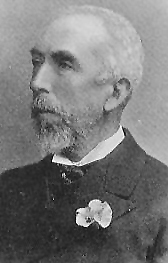THE major part of a mansion built during the golden years of Helensburgh villa architecture has been put on the property market at an asking price of over £420,000.
Towerville, at 46 George Street, was built in 1858 and was one of the early works of renowned architect John M.Honeyman (1831-1914), who 20 years later was the architect of the Municipal Buildings in Sinclair Street — replacing an old theatre which had also served as the Town Hall.
Built for Captain James Galbraith, Towerville is described as an outstanding Tudor Gothic villa. Later improvements included a striking stained glass vestibule window depicting a Knight by Oscar Paterson (1862-1934), and a beautiful bay window in the ornate drawing room.
Selling agents Clyde Property describe the villa as a four-bedroom character property.
They say: “The house was converted post war, and Towerville forms the major part of the property comprising a most impressive lower conversion of over 3,000 square feet which includes various ancillary wings and an additional very large, as yet undeveloped, basement area that contains five rooms and a wine cellar.”
Writing in the Helensburgh Heritage Trust bicentenary book ‘200 Year of Helensburgh’, Doris Gentles observes: “Towerville is a large, impressive Gothic villa in Scots baronial style with castellations, hoodmoulds, buttressed bay windows and quatrefoils to mention a few of the fascinating details of this house. The interior is an impressive as the exterior, with fine woodwork and plaster work.
“The area has a homogenous appearance as a result of a numnber of the houses being sympathetically extended by local architects William Leiper (1839-1916), Alistair Nisbet Paterson (1862-1947) and Robert Wemyss (1865-1955).”
 John Honeyman (pictured) was born in Glasgow, the son of a prominent merchant who also had a house on Garelochside where the family spent the school holidays and enjoyed boating.
John Honeyman (pictured) was born in Glasgow, the son of a prominent merchant who also had a house on Garelochside where the family spent the school holidays and enjoyed boating.
He was educated at Merchiston Castle School in Edinburgh, followed by the Universities of Edinburgh and Glasgow. He practised in Glasgow and became one of the leading domestic and church architects of the late 19th century.
He maintained a partnership with John Keppie (1862-1945) and latterly with Charles Rennie Macintosh (1868-1928).
Many of the buildings he designed are in Glasgow, although he was also responsible for St Michael's Parish Church in Edinburgh (1883), together with a number of churches and country houses across central Scotland.
In Glasgow, Honeyman built grand houses, churches, public and commercial architecture, including the Trinity Church (now the Henry Wood Hall, 1864), the Ca' D'Oro (1872), Rockville School (1877), the Barony North Church (1880) and the Elder Park in Govan. His publications include ‘The Dwellings of the Poor’.
He served as president of the Glasgow Archaeological Society and governor of the Glasgow and West of Scotland Technical College. He also took part in 1859 in raising the first corps of volunteer artillery in Dunbartonshire, and he continued as a commissioned officer of that body for ten years.
- Towerville photo by courtesy of Clyde Property, 22 West Princes Street, Helensburgh.